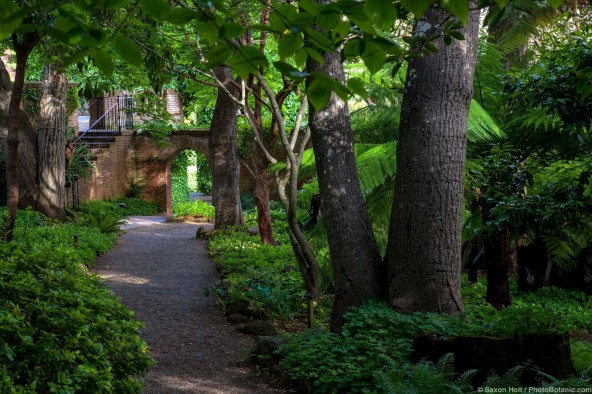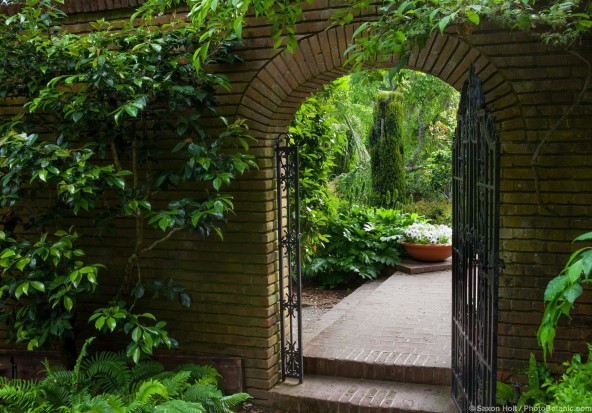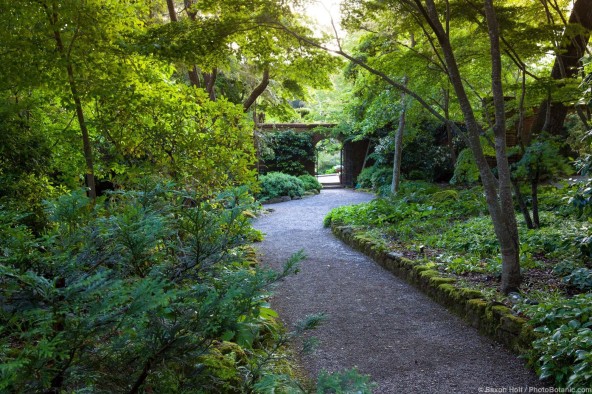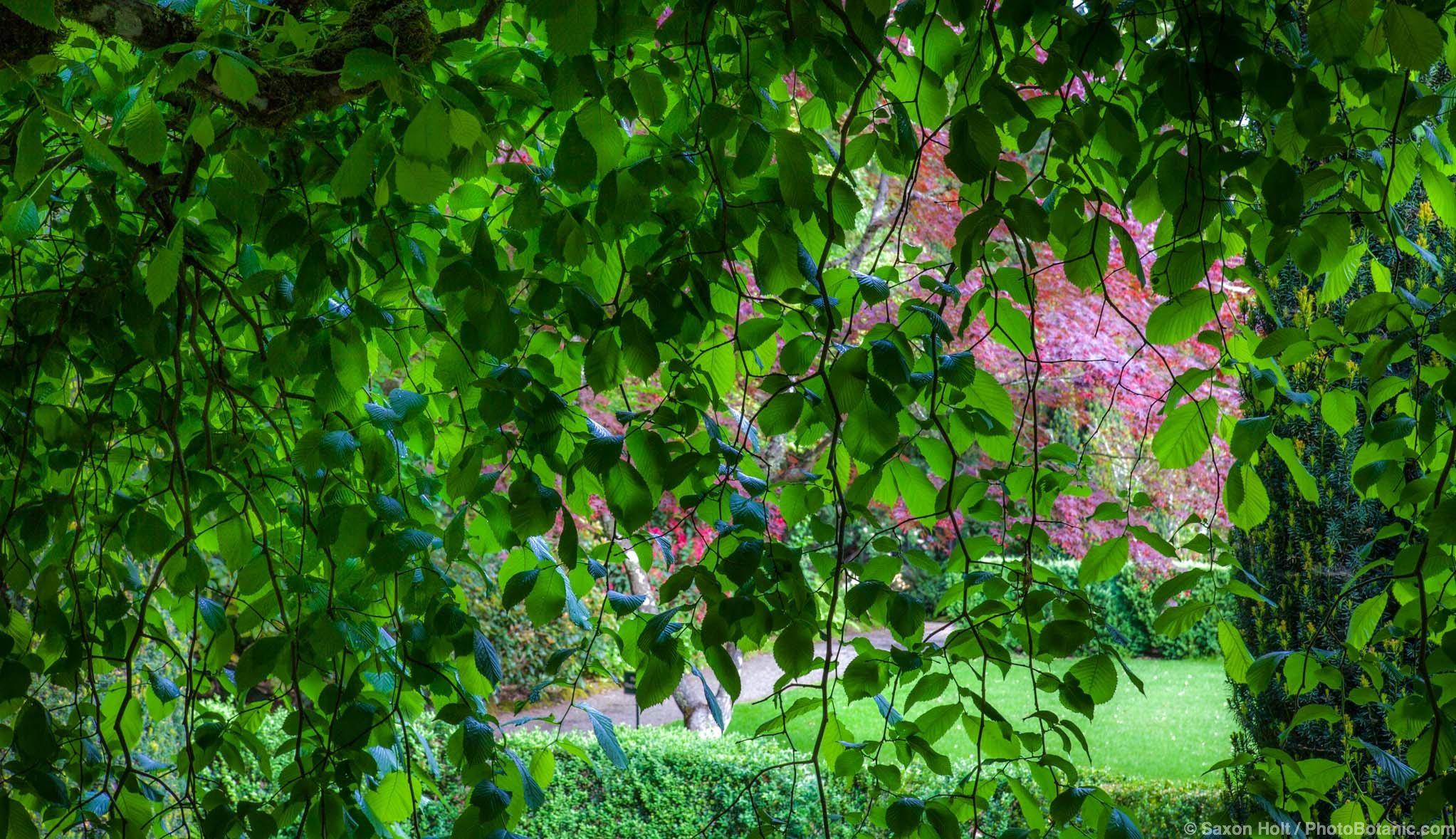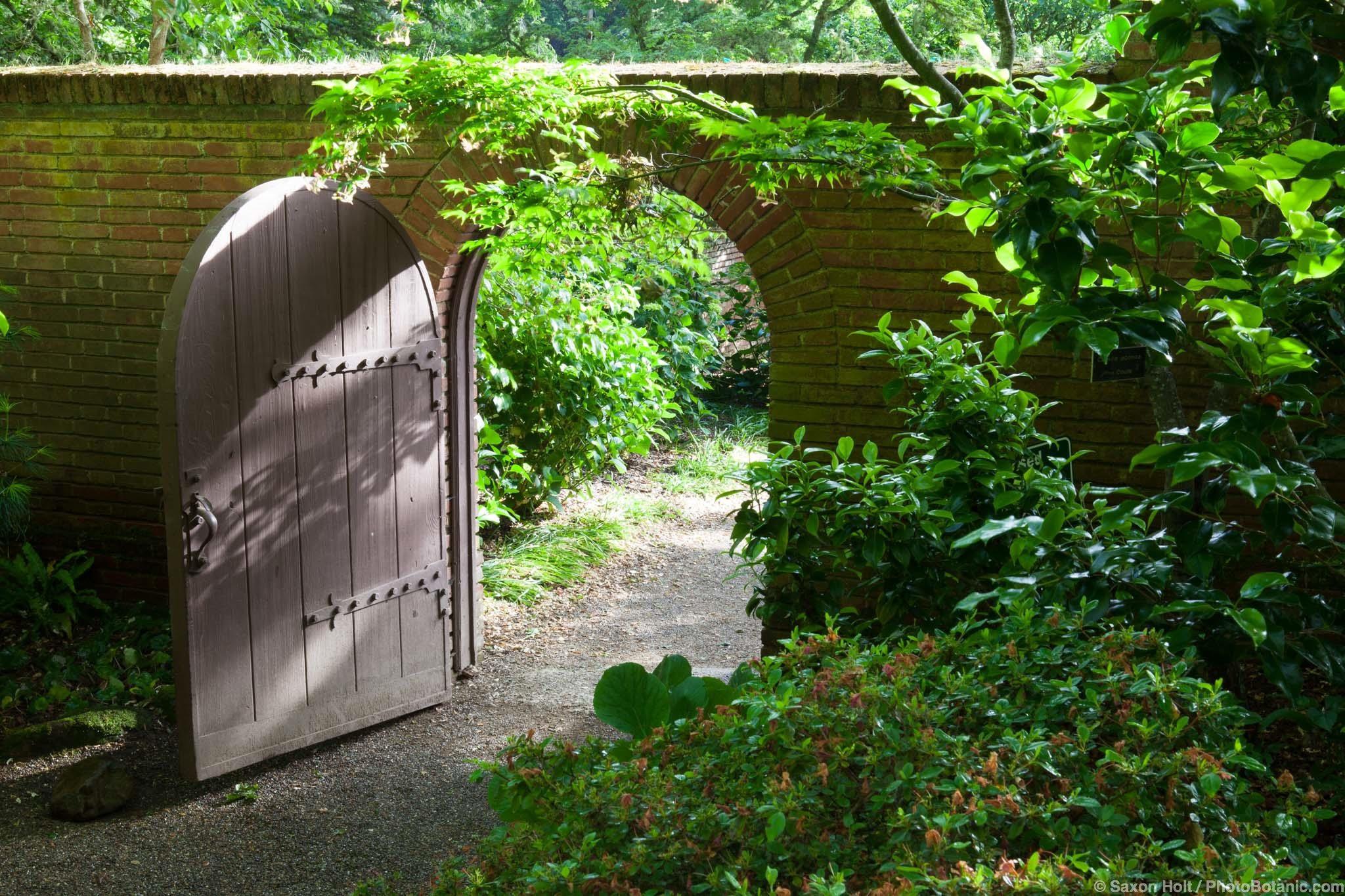 I love the morning light when photographing gardens. Gardens are fresh, the air clean, and the light is sweet.
I love the morning light when photographing gardens. Gardens are fresh, the air clean, and the light is sweet.
It is nearly impossible to work in the hot sunny light when the brightest colors take on a contrasted, metallic look and the shady areas become black holes. In California where there is little humidity in the air, the window of opportunity for garden photography and the soft morning light is usually gone within two hour of sunrise. More humid climates can push that window since the natural haze cuts the glare and helps the light surround and soften the scene.
Even so, for purely practical reason, I usually recommend that my students work in late afternoon. It’s simple – you don’t have to get up before dawn and get into the garden before the sun comes up – this time of year before 6. The late afternoon light is also soft and slants in from the side just like the morning. Not quite as clean, but often warmer.
But whenever I have the choice, and the garden is one I already know (and don’t have to learn about pre-dawn), I love the morning light.
Recently I was working in Filoli when about 8 a.m. one of the gardeners gave me a big smile and complimented the “great light”, which was by then, too bright to work in most of the garden. The sun was full on the trees in the Woodland Garden across from where we stood. I explained the light might be good from behind the trees, but in front of them.
Wait a minute ! Umm, if that is my advice, then why was I still working against the light, struggling in the formal garden ?! I took my own advice and learned a lesson I already knew. Work with the light.
The Woodland Garden is separated from the other gardens so light comes in from the side. It becomes a bright wall outside and leaks in through the trees and through the entries.
Using the concept that the eye is drawn to bright areas, a photographer can use light to draw the eye when creating a composition. In these shade garden photos, I am photographing the light. The light beyond the garden is the fundamental concept behind my thought process. In each I am think how the light will affect the composition
These next two photos are taken from exactly the same spot; one with one-third sky above the garden wall, the other with two thirds sky. Each has a distinct story. A photo with equal sky and garden would be confusing.
In the e-book I will explain more about exposure and color balance using these two photos, but it all begins with the light.
After leaving the Woodland Garden I kept seeing light patterns. Through and between the leaves of this weeping Camperdown Elm, I am still photographing the light.

